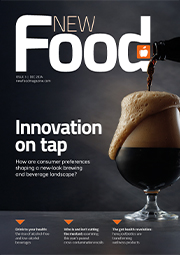Sensitive and selective analysis of fipronil residues in eggs using Thermo Scientific GC-MS/MS triple quadrupole technology
- Like
- Digg
- Del
- Tumblr
- VKontakte
- Buffer
- Love This
- Odnoklassniki
- Meneame
- Blogger
- Amazon
- Yahoo Mail
- Gmail
- AOL
- Newsvine
- HackerNews
- Evernote
- MySpace
- Mail.ru
- Viadeo
- Line
- Comments
- Yummly
- SMS
- Viber
- Telegram
- Subscribe
- Skype
- Facebook Messenger
- Kakao
- LiveJournal
- Yammer
- Edgar
- Fintel
- Mix
- Instapaper
- Copy Link
Posted: 1 November 2017 | Thermo Fisher Scientific | No comments yet
Pesticides are chemicals used to protect crops and control a variety of pests such as weeds, fungi, rodents, and insects.
Because of their extensive use, pesticides can be found in the air, soils, water, and ultimately in the food chain. Although their use is highly regulated, the misuse of pesticides can lead to unwanted contamination of food and possible health impacts on humans and the environment. An example of such events of pesticide misuse was recently reported in Europe where fipronil, an acaricide authorized to treat pets or selected plant seeds, contaminated a large number of eggs and egg products.
This study demonstrates the excellent sensitivity, selectivity, and linearity achieved for the analysis of fipronil and its metabolites in eggs using the Thermo Scientific™ TSQ™ 8000 Evo triple quadrupole GC-MS system. System performance was tested using full scan acquisition and simple instrumental setup.
Download this whitepaper
This whitepaper is restricted - login or subscribe free to access


Why subscribe? Join our growing community of thousands of industry professionals and gain access to:
- bi-monthly issues in print and/or digital format
- case studies, whitepapers, webinars and industry-leading content
- breaking news and features
- our extensive online archive of thousands of articles and years of past issues
- ...And it's all free!
Click here to Subscribe today Login here
Related content from this organisation
Related topics
Contaminants, Equipment, Food Fraud, Food Safety, Lab techniques, Rapid Detection, Research & development, Technology & Innovation









